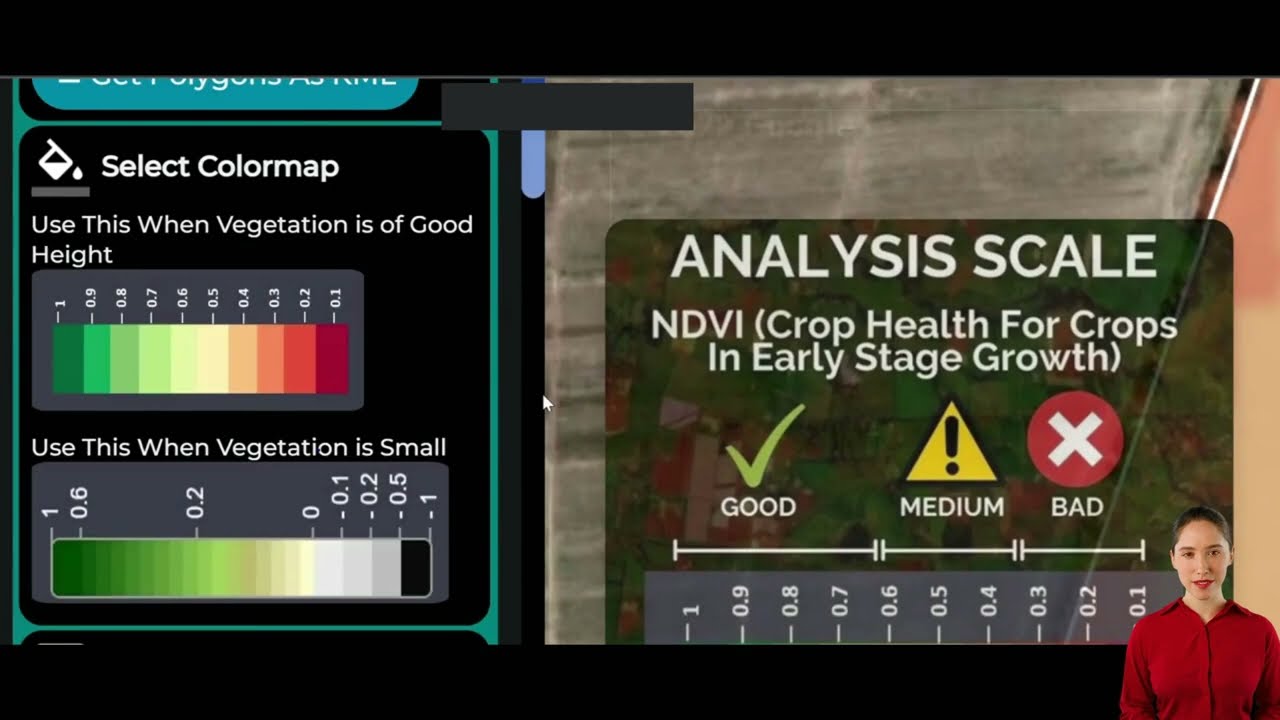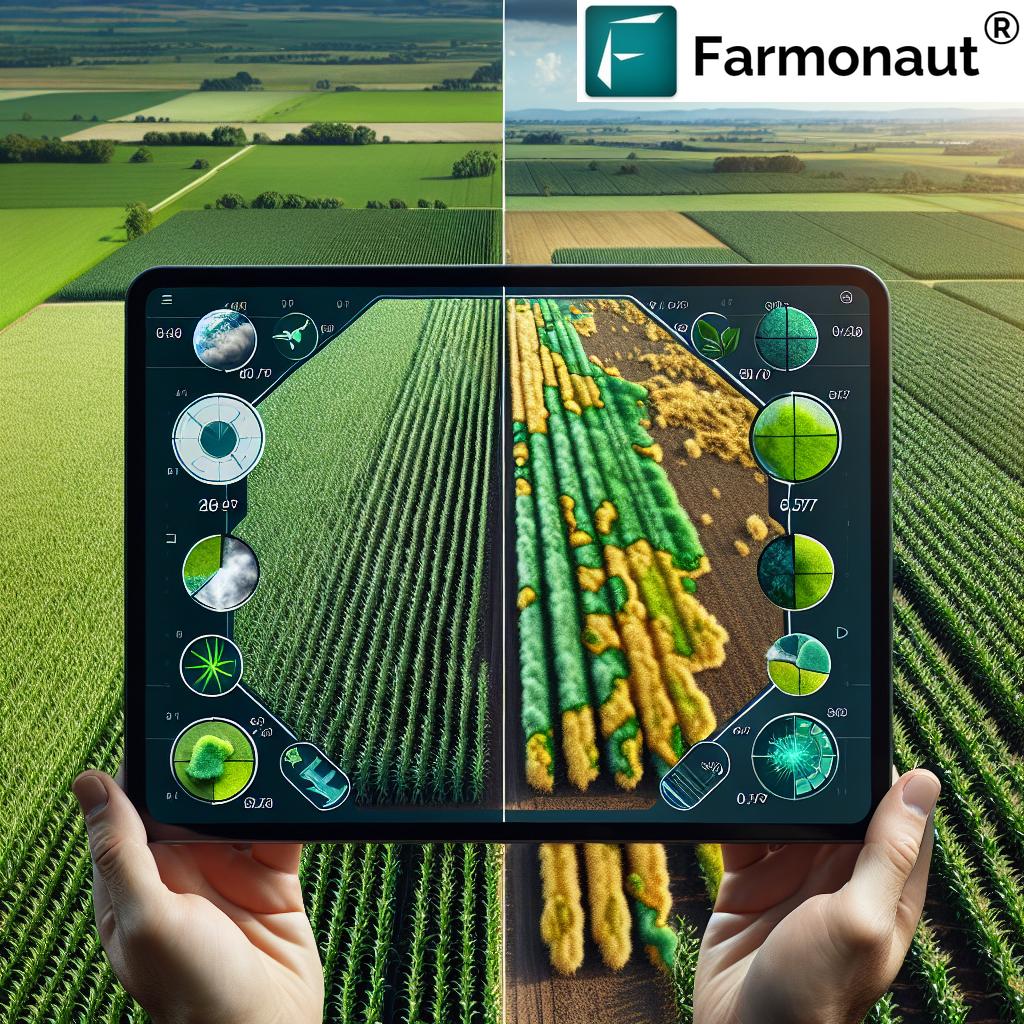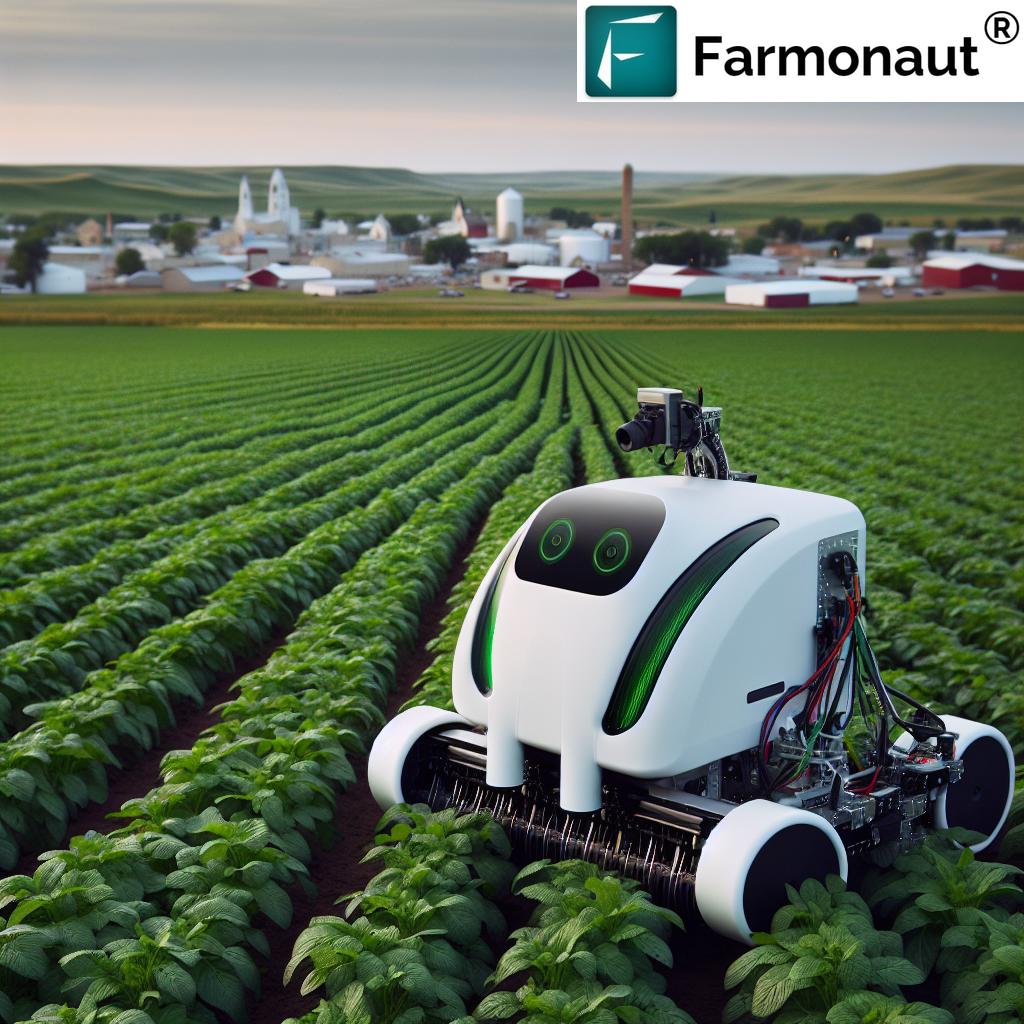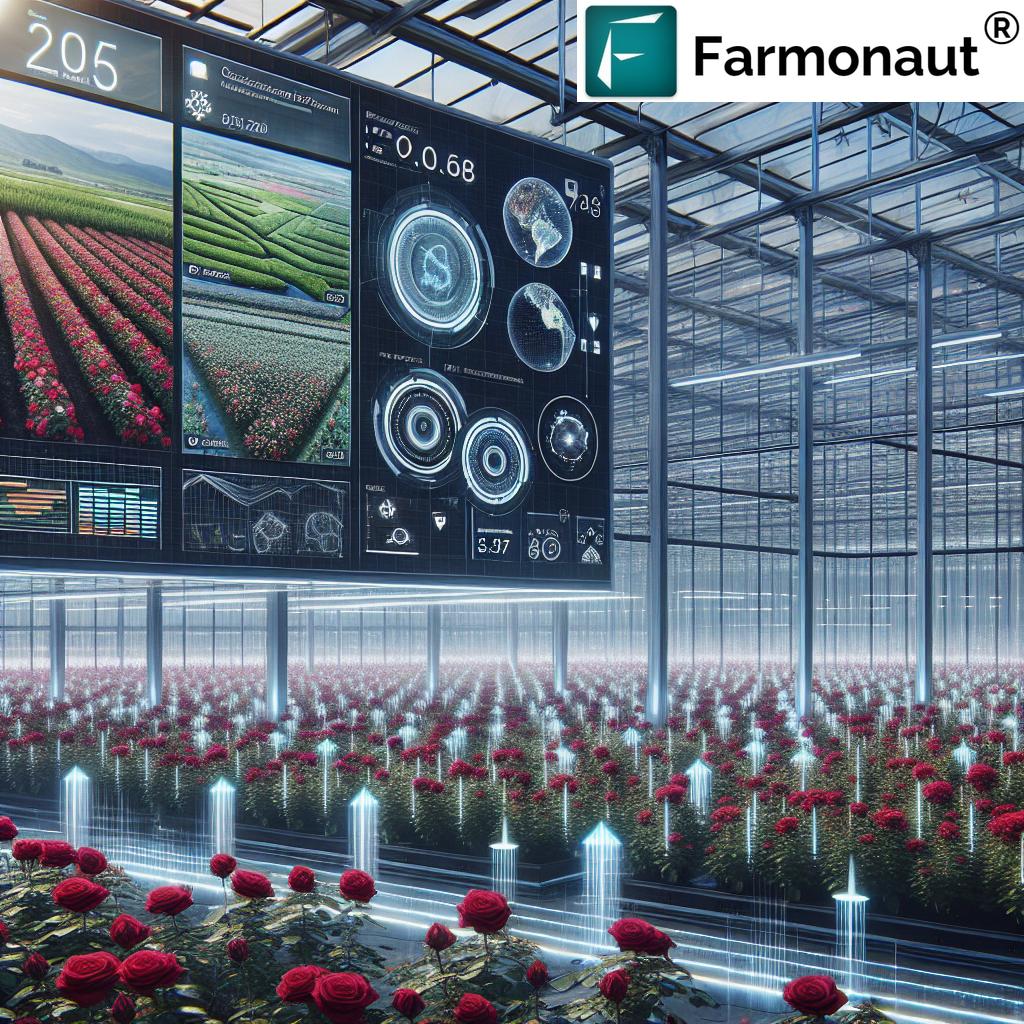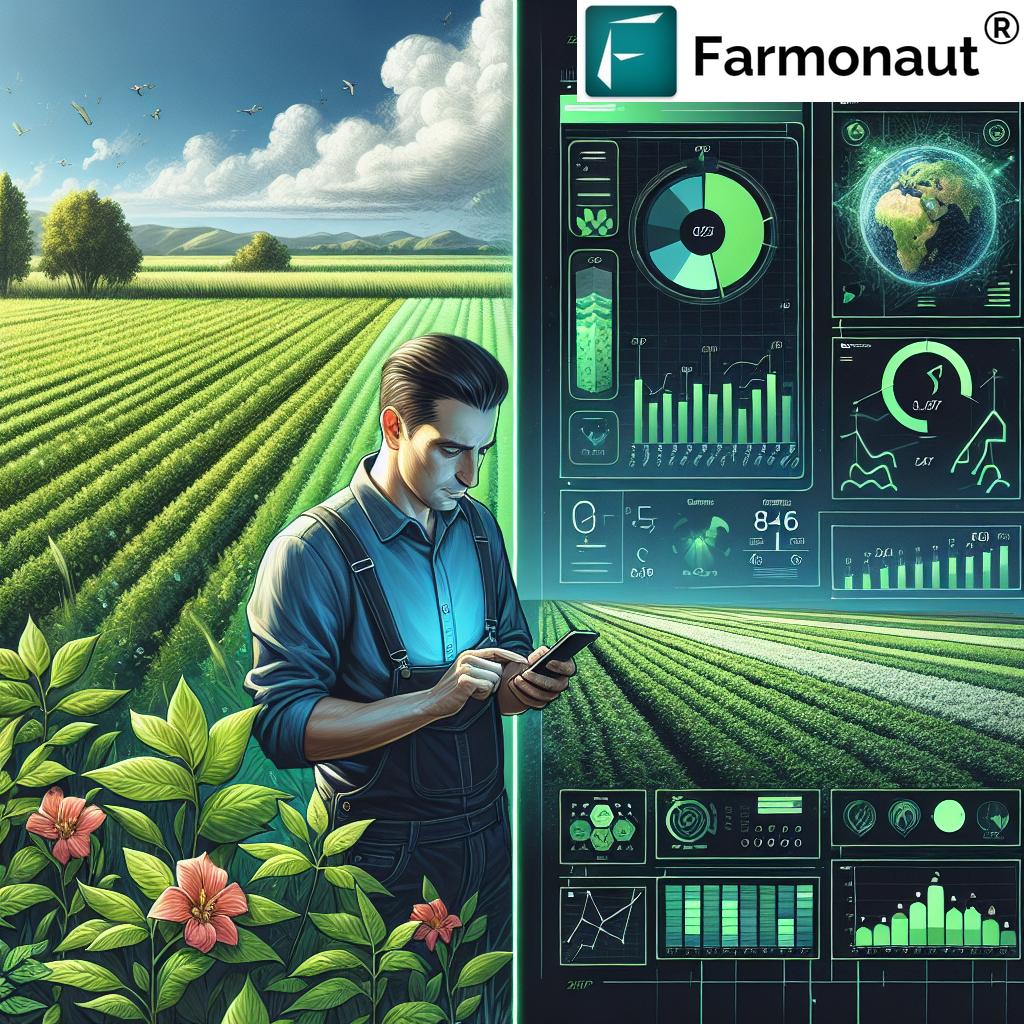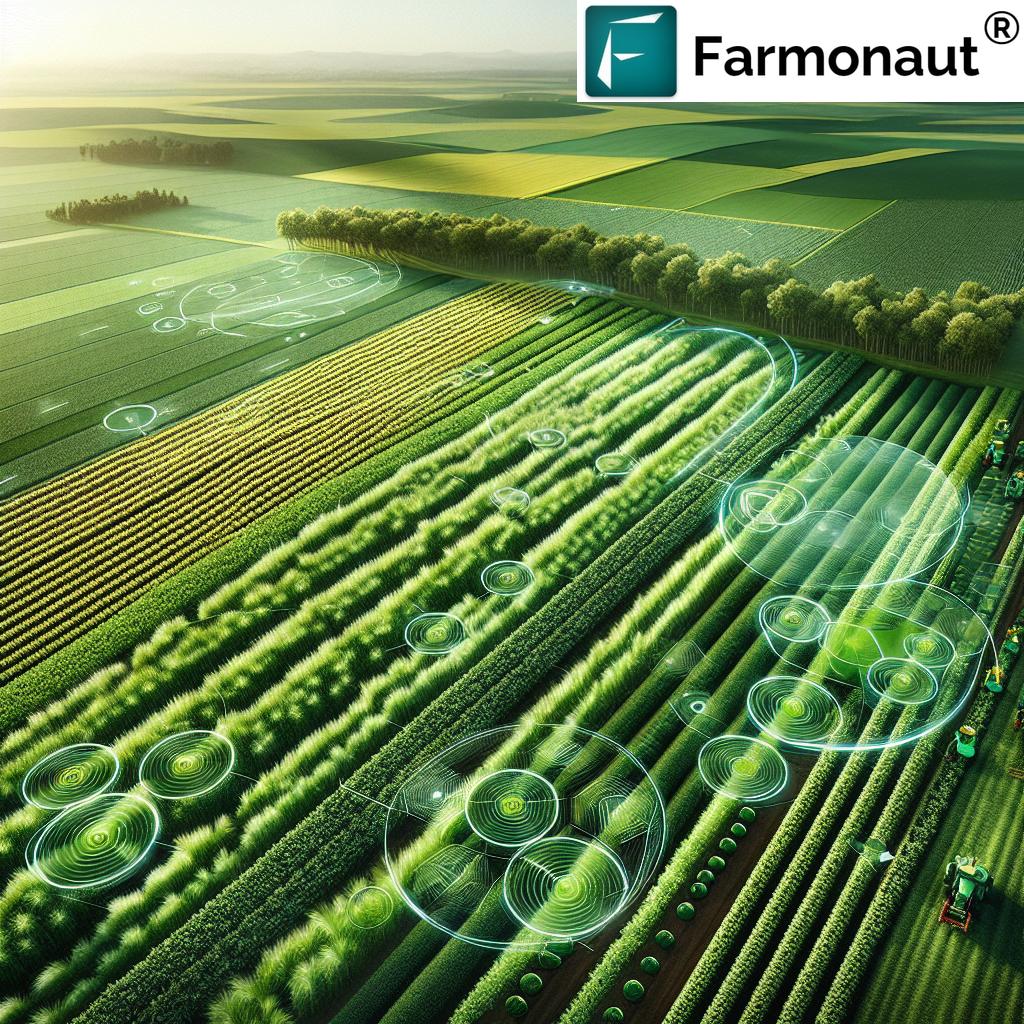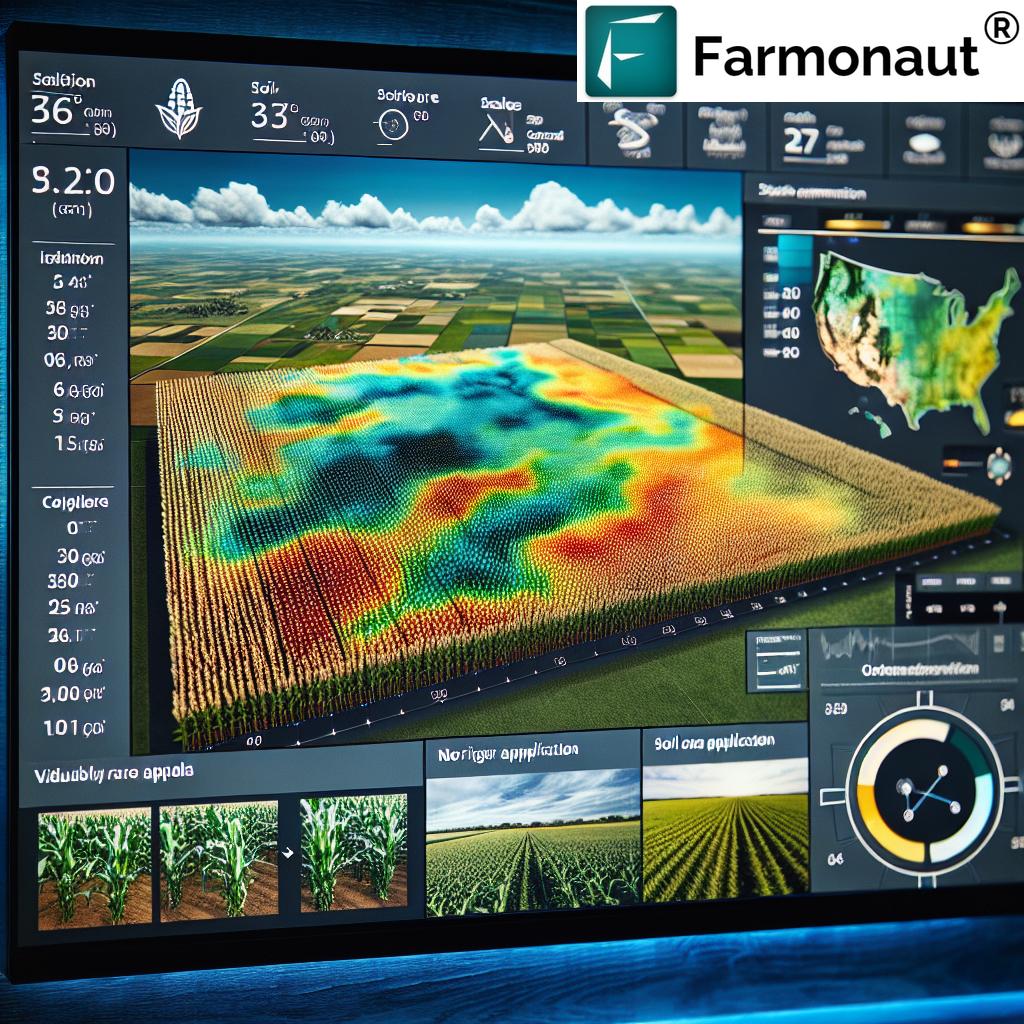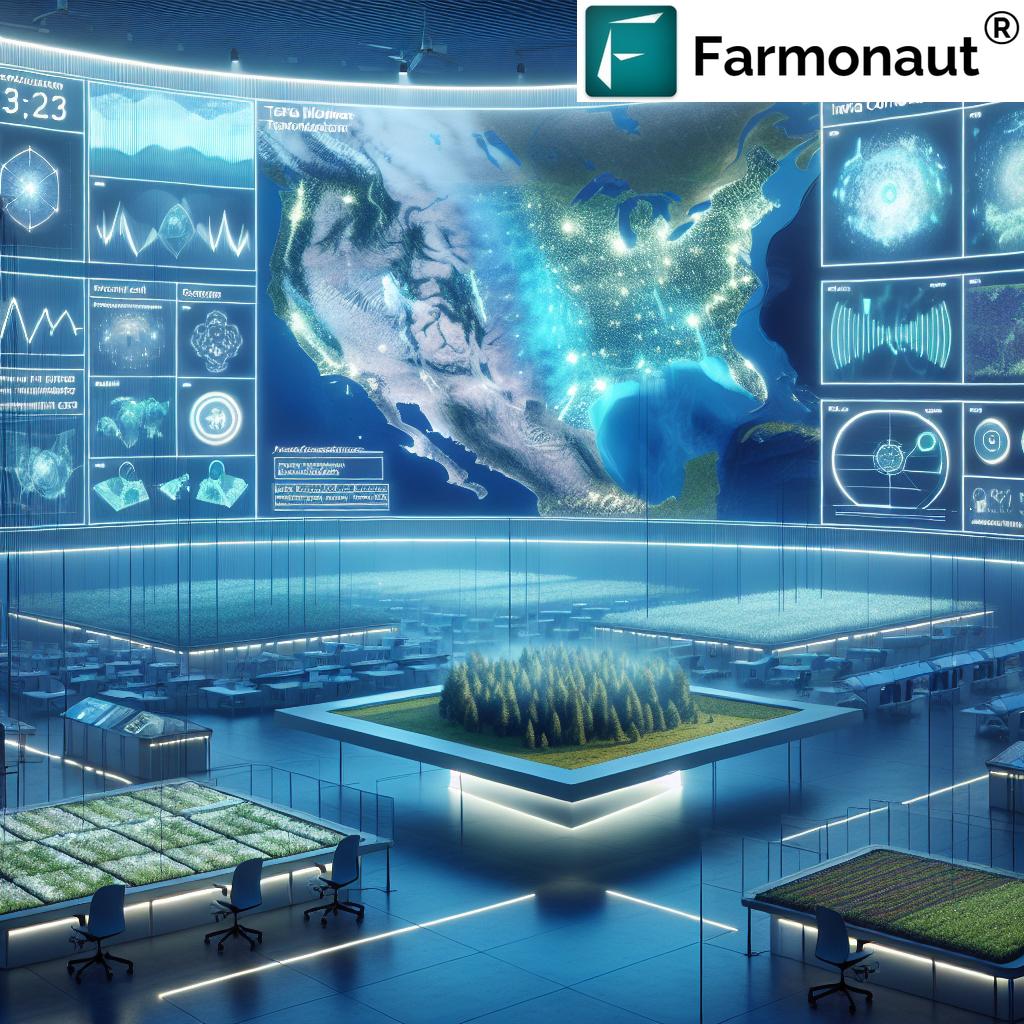Revolutionizing Agriculture: How Precision Irrigation Systems Are Shaping Sustainable Farming in 2024
“Precision irrigation systems can reduce water usage by up to 50% compared to traditional methods in agriculture.”
As we delve into the world of modern agriculture in 2024, we find ourselves at the forefront of a technological revolution that is reshaping the way we grow our food. At the heart of this transformation lies precision irrigation, a game-changing approach that is not only conserving our precious water resources but also optimizing crop health and productivity like never before. In this comprehensive exploration, we’ll uncover how advanced irrigation systems are evolving from field-level applications to plant-specific precision, and how this shift is defining the future of sustainable farming.
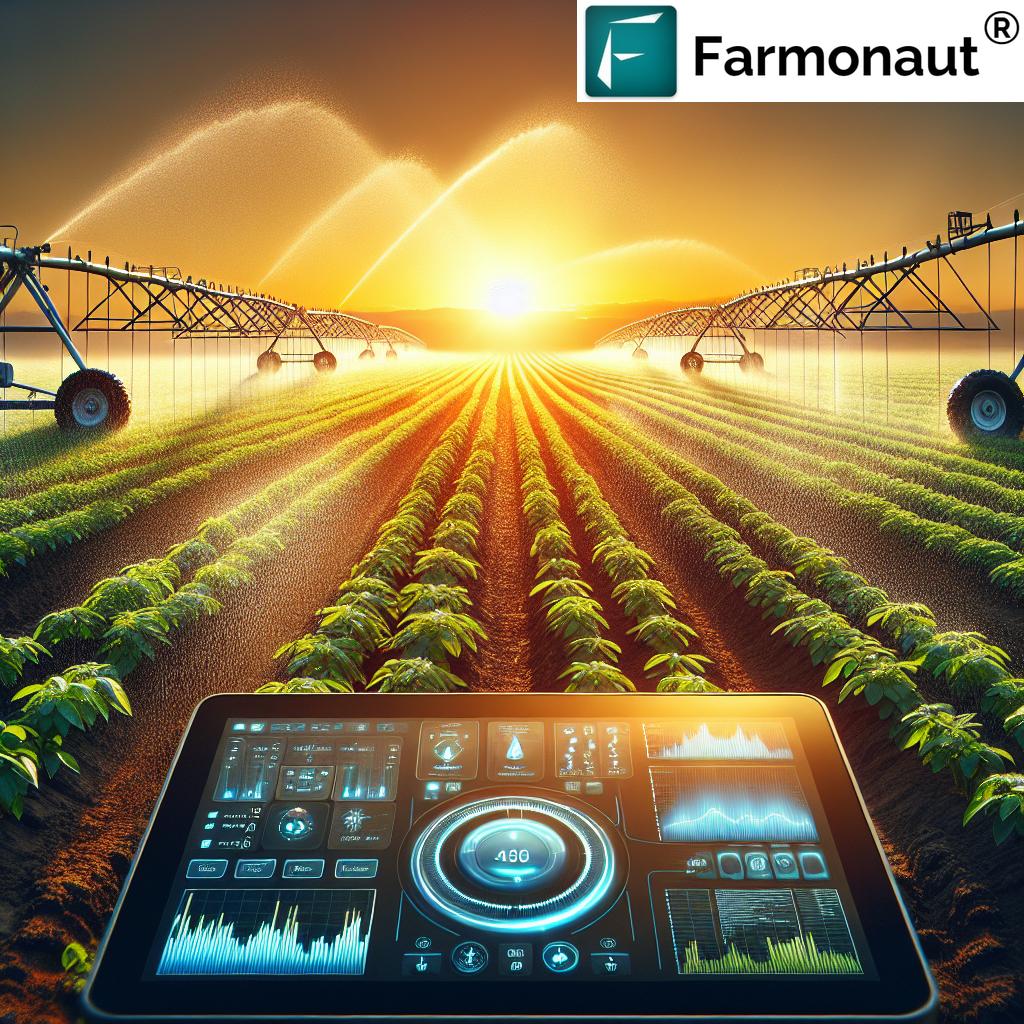
The Evolution of Irrigation: From Traditional to Precision
To appreciate the magnitude of change brought about by precision irrigation techniques, we must first understand the journey from traditional methods to the smart systems we see today. Historically, irrigation was a broad-stroke approach, often leading to overwatering, nutrient runoff, and inefficient use of resources. Today, we’re witnessing a paradigm shift towards water-efficient farming that’s changing the agricultural landscape.
- Field-level to Plant-specific: Traditional irrigation treated entire fields uniformly. Now, advanced irrigation systems can cater to the unique needs of individual plants or rows.
- Manual to Automated: Gone are the days of manual valve operation. Automated irrigation solutions now adjust water flow based on real-time data.
- Guesswork to Data-driven: Instead of relying on intuition, farmers now make precise decisions using data from soil moisture sensors and weather stations.
This evolution is not just a technological upgrade; it’s a complete reimagining of how we approach water management in agriculture. By integrating smart technologies with traditional farming wisdom, we’re creating a more sustainable and productive future for agriculture.
The Core Components of Precision Irrigation Systems
Precision irrigation is a complex symphony of various technologies working in harmony. Let’s break down the key components that make these systems so effective:
- Smart Sensors: These are the eyes and ears of the system, constantly monitoring soil moisture, temperature, and even plant stress levels.
- Weather Stations: On-site weather monitoring provides crucial data for irrigation scheduling and crop protection.
- Control Systems: The brain of the operation, these systems process data and control water flow with precision.
- Drip Lines and Sprinklers: High-efficiency emitters deliver water directly to the plant roots, minimizing waste.
- Fertigation Units: These integrate fertilizer application with irrigation, ensuring nutrients are delivered efficiently.
Together, these components create a responsive and intelligent irrigation system that adapts to the changing needs of crops and environmental conditions.
Smart Fertigation: Precision Nutrient Management
One of the most exciting advancements in precision irrigation is the integration of smart fertigation systems. These systems are revolutionizing how we apply nutrients to crops, leading to significant improvements in efficiency and environmental stewardship.
“Smart fertigation techniques can increase nutrient use efficiency by 30-40%, significantly reducing fertilizer waste and environmental impact.”
- Targeted Nutrient Delivery: Fertigation allows for the precise application of nutrients directly to the plant’s root zone, reducing waste and improving uptake.
- Dynamic Nutrient Programs: Advanced systems can adjust nutrient mixes based on crop growth stages and real-time soil analysis.
- Reduced Environmental Impact: By minimizing excess nutrient application, we’re seeing a significant decrease in runoff and groundwater contamination.
The integration of fertigation with precision irrigation is a prime example of how technology is enabling us to do more with less, optimizing both water and nutrient use in agriculture.
The Role of Data in Precision Irrigation
At the heart of precision irrigation lies data – the lifeblood of informed decision-making in modern agriculture. Let’s explore how various types of data are collected and utilized to drive irrigation efficiency:
- Soil Moisture Data: Continuous monitoring allows for precise water application, preventing both under and over-watering.
- Weather Data: Real-time and forecasted weather information helps in planning irrigation schedules and preparing for extreme events.
- Crop Health Indicators: Vegetation indices derived from satellite or drone imagery can indicate plant stress and water needs.
- Historical Performance Data: Past seasons’ data helps in refining irrigation strategies for optimal results.
By leveraging these data streams, farmers can make informed decisions that not only conserve water but also promote optimal crop health and yield. This data-driven approach is transforming agriculture from an art into a precise science.

Environmental Benefits of Precision Irrigation
The adoption of precision irrigation techniques is not just about improving crop yields; it’s also about fostering a more sustainable relationship with our environment. Here are some key environmental benefits:
- Water Conservation: By applying water only where and when it’s needed, precision irrigation significantly reduces water waste.
- Reduced Runoff: Precise application means less water and nutrients escaping into surrounding ecosystems.
- Soil Health Preservation: Avoiding overwatering helps maintain soil structure and prevents erosion.
- Energy Savings: More efficient water use translates to reduced pumping and lower energy consumption.
- Climate Resilience: Advanced systems help crops better withstand drought and extreme weather events.
These environmental benefits underscore the critical role that precision irrigation plays in sustainable agriculture technology. As we face increasing pressure on our natural resources and changing climate conditions, these systems offer a path to more resilient and eco-friendly farming practices.
Precision Irrigation in Various Agricultural Settings
The versatility of precision irrigation systems allows for their application across a wide range of agricultural settings. Let’s explore how these technologies are being implemented in different contexts:
- Row Crops: In large-scale operations, precision irrigation helps manage water across vast acreages, optimizing resources for crops like corn, soybeans, and cotton.
- Orchards and Vineyards: Tree crops and grapevines benefit from targeted irrigation that can be adjusted based on the specific needs of different varieties and growth stages.
- Greenhouse Production: In controlled environments, precision irrigation systems work in tandem with climate control to create optimal growing conditions for high-value crops.
- Vertical Farming: In urban agriculture settings, precision irrigation is essential for managing water and nutrients in multi-level growing systems.
- Specialty Crops: For crops like berries and vegetables, precision irrigation ensures consistent quality and yield, crucial for meeting market demands.
The adaptability of precision irrigation across these diverse settings demonstrates its potential to revolutionize water management in all facets of agriculture.
Overcoming Challenges in Precision Irrigation Adoption
While the benefits of precision irrigation are clear, there are still challenges to widespread adoption. Understanding and addressing these obstacles is crucial for the continued growth of sustainable agriculture technology:
- Initial Investment Costs: The upfront cost of implementing precision irrigation systems can be significant, especially for smaller farms.
- Technical Expertise: Operating and maintaining these advanced systems requires a new set of skills that many farmers are still acquiring.
- Data Management: Handling the large volumes of data generated by precision systems can be overwhelming without proper tools and training.
- Compatibility Issues: Integrating new precision irrigation technologies with existing farm equipment and practices can be challenging.
- Scalability: Adapting precision irrigation solutions from small plots to large-scale operations requires careful planning and execution.
Addressing these challenges requires a collaborative effort from technology providers, agricultural extension services, and policymakers to support farmers in transitioning to more efficient irrigation practices.
The Future of Precision Irrigation
As we look towards the future, the potential for precision irrigation to further transform agriculture is immense. Here are some exciting developments on the horizon:
- AI and Machine Learning: These technologies will enable irrigation systems to learn and adapt autonomously, further optimizing water use.
- Internet of Things (IoT): Greater connectivity between farm devices will create more comprehensive and responsive irrigation networks.
- Nanotechnology: Advances in this field could lead to ultra-precise sensors and delivery systems for water and nutrients.
- Robotics: Autonomous robots could manage irrigation systems, performing maintenance and adjustments with minimal human intervention.
- Genetic Engineering: Developing crops with enhanced water-use efficiency could complement precision irrigation technologies.
These advancements promise to make precision irrigation even more effective, pushing the boundaries of water-efficient farming and sustainable agriculture.
Comparing Traditional and Precision Irrigation Systems
To fully appreciate the impact of precision irrigation, let’s compare it directly with traditional methods:
| Metric | Traditional Irrigation | Precision Irrigation |
|---|---|---|
| Water Usage (estimated gallons/acre) | 500,000 – 700,000 | 250,000 – 350,000 |
| Nutrient Efficiency (estimated %) | 30 – 50% | 70 – 90% |
| Crop Yield Increase (estimated %) | Baseline | 15 – 30% increase |
| Environmental Impact | High runoff, soil erosion | Minimal runoff, reduced erosion |
| Data-Driven Decision Making | No | Yes |
| Automation Level | Low | High |
| Climate Resilience | Low | High |
| Initial Setup Cost | $500 – $1,500 per acre | $1,000 – $3,000 per acre |
| Long-term ROI (estimated %) | 5 – 10% | 15 – 25% |
| Integration with Smart Farm Systems | No | Yes |
This comparison clearly illustrates the substantial benefits of precision irrigation across multiple aspects of farming, from resource efficiency to long-term profitability and environmental stewardship.
The Role of Technology Providers in Advancing Precision Irrigation
In the evolving landscape of precision agriculture, technology providers play a crucial role in driving innovation and accessibility. Companies like Farmonaut are at the forefront of this revolution, offering advanced solutions that integrate seamlessly with existing farm setups to maximize efficiency.
Farmonaut’s platform leverages satellite imagery and artificial intelligence to provide farmers with real-time insights into crop health, soil moisture levels, and other critical metrics. This data is invaluable for optimizing irrigation schedules and resource allocation. By making precision agriculture more affordable and accessible, Farmonaut is helping farmers worldwide transition to more sustainable and profitable practices.
Key features of Farmonaut’s technology include:
- Satellite-based crop health monitoring
- AI-driven personalized farm advisory
- Weather forecasting and analysis
- Resource management tools
These tools enable farmers to make data-driven decisions about irrigation, reducing water waste and improving crop yields. By integrating such technologies into their operations, farmers can significantly enhance their irrigation practices and overall farm management.
For those interested in exploring Farmonaut’s solutions:
Additionally, for developers and businesses looking to integrate advanced agricultural data into their own systems, Farmonaut offers API access:
The Global Impact of Precision Irrigation
The adoption of precision irrigation systems is not just transforming individual farms; it’s having a profound impact on global agriculture and food security. As we face challenges such as population growth, climate change, and water scarcity, the role of precision irrigation in ensuring sustainable food production becomes increasingly critical.
- Food Security: By improving crop yields and resource efficiency, precision irrigation contributes to more stable and abundant food supplies.
- Water Conservation: On a global scale, the water savings from widespread adoption of precision irrigation could be enormous, helping to address water scarcity issues.
- Climate Change Mitigation: More efficient use of resources in agriculture can significantly reduce greenhouse gas emissions associated with farming practices.
- Economic Development: In developing regions, precision irrigation can boost agricultural productivity, driving economic growth and improving livelihoods.
The global impact of precision irrigation extends beyond the farm, influencing environmental sustainability, economic development, and food security on a worldwide scale.
Integrating Precision Irrigation with Other Smart Farming Technologies
To maximize the benefits of precision irrigation, it’s essential to consider how these systems integrate with other smart farming technologies. This holistic approach to farm management can lead to even greater efficiencies and sustainability:
- Precision Planting: Combining precise seed placement with targeted irrigation can optimize plant growth from the start.
- Drone Technology: Drones can provide high-resolution imagery to complement satellite data, offering more detailed insights into crop health and irrigation needs.
- Automated Harvesting: Precision irrigation can be coordinated with automated harvesting systems to ensure optimal crop maturity and quality.
- Farm Management Software: Integrating irrigation data with comprehensive farm management platforms allows for better overall decision-making and resource allocation.
By creating a seamlessly connected farm ecosystem, precision irrigation becomes part of a larger strategy for optimizing every aspect of agricultural production.
The Economic Case for Precision Irrigation
While the environmental benefits of precision irrigation are clear, the economic advantages are equally compelling. Let’s examine the financial case for adopting these advanced systems:
- Reduced Input Costs: Significant savings on water, energy, and fertilizer expenses.
- Increased Yields: More efficient resource use typically leads to higher crop yields and quality.
- Labor Savings: Automation reduces the need for manual irrigation management.
- Risk Mitigation: Better control over water application can help protect crops during adverse weather conditions.
- Premium Pricing: Improved crop quality can command higher prices in the market.
While the initial investment in precision irrigation systems can be substantial, the long-term economic benefits often outweigh the costs, making it a sound investment for forward-thinking farmers.
Precision Irrigation and Sustainable Development Goals
The adoption of precision irrigation aligns closely with several of the United Nations’ Sustainable Development Goals (SDGs), demonstrating its importance in global sustainability efforts:
- SDG 2: Zero Hunger – By improving agricultural productivity and resilience.
- SDG 6: Clean Water and Sanitation – Through more efficient water use in agriculture.
- SDG 12: Responsible Consumption and Production – By promoting sustainable farming practices.
- SDG 13: Climate Action – Through reduced greenhouse gas emissions and improved climate resilience.
- SDG 15: Life on Land – By minimizing the environmental impact of agriculture on ecosystems.
The contribution of precision irrigation to these global goals underscores its significance in creating a more sustainable and food-secure world.
Conclusion: Embracing the Future of Sustainable Agriculture
As we’ve explored throughout this article, precision irrigation systems are at the forefront of a revolution in sustainable farming. By optimizing water use, enhancing crop health, and improving resource efficiency, these advanced technologies are shaping the future of agriculture in 2024 and beyond.
The benefits of precision irrigation extend far beyond water conservation, touching on critical aspects of global food security, environmental sustainability, and economic development. As farmers, policymakers, and technology providers continue to collaborate and innovate, we can expect to see even more impressive advancements in this field.
For those looking to stay at the cutting edge of agricultural technology, exploring solutions like those offered by Farmonaut can provide valuable insights and tools for implementing precision irrigation and other smart farming practices.
As we face the challenges of feeding a growing global population in an era of climate change and resource scarcity, precision irrigation stands out as a beacon of hope and innovation. By embracing these technologies and the principles of sustainable agriculture, we can work towards a future where farming is not only more productive but also more in harmony with our planet’s delicate ecosystems.
FAQs
- What is precision irrigation?
Precision irrigation is an advanced method of water management that uses technology to deliver the right amount of water to crops at the right time, based on real-time data about soil moisture, weather conditions, and plant needs. - How does precision irrigation differ from traditional irrigation methods?
Unlike traditional methods that apply water uniformly across fields, precision irrigation targets specific areas or even individual plants, optimizing water use and reducing waste. - What are the main components of a precision irrigation system?
Key components include soil moisture sensors, weather stations, control systems, efficient emitters (like drip lines), and often, integrated fertigation units. - How much water can be saved with precision irrigation?
Precision irrigation can reduce water usage by up to 50% compared to traditional irrigation methods, depending on the crop and environmental conditions. - Is precision irrigation suitable for all types of crops?
While precision irrigation can benefit most crops, it’s particularly effective for high-value crops, orchards, vineyards, and in water-scarce regions. - What are the environmental benefits of precision irrigation?
Benefits include reduced water waste, decreased runoff, improved soil health, and lower energy consumption for pumping water. - How does precision irrigation contribute to climate resilience?
By optimizing water use and improving plant health, precision irrigation helps crops better withstand drought and extreme weather events. - What role does data play in precision irrigation?
Data from soil sensors, weather stations, and crop monitoring tools is crucial for making informed decisions about when and how much to irrigate. - How does precision irrigation integrate with other smart farming technologies?
It can be integrated with farm management software, drones, automated harvesting systems, and other precision agriculture tools for comprehensive farm optimization. - What is the future of precision irrigation?
The future likely includes greater integration of AI and machine learning, more advanced sensors, and possibly the use of robotics for system management.




